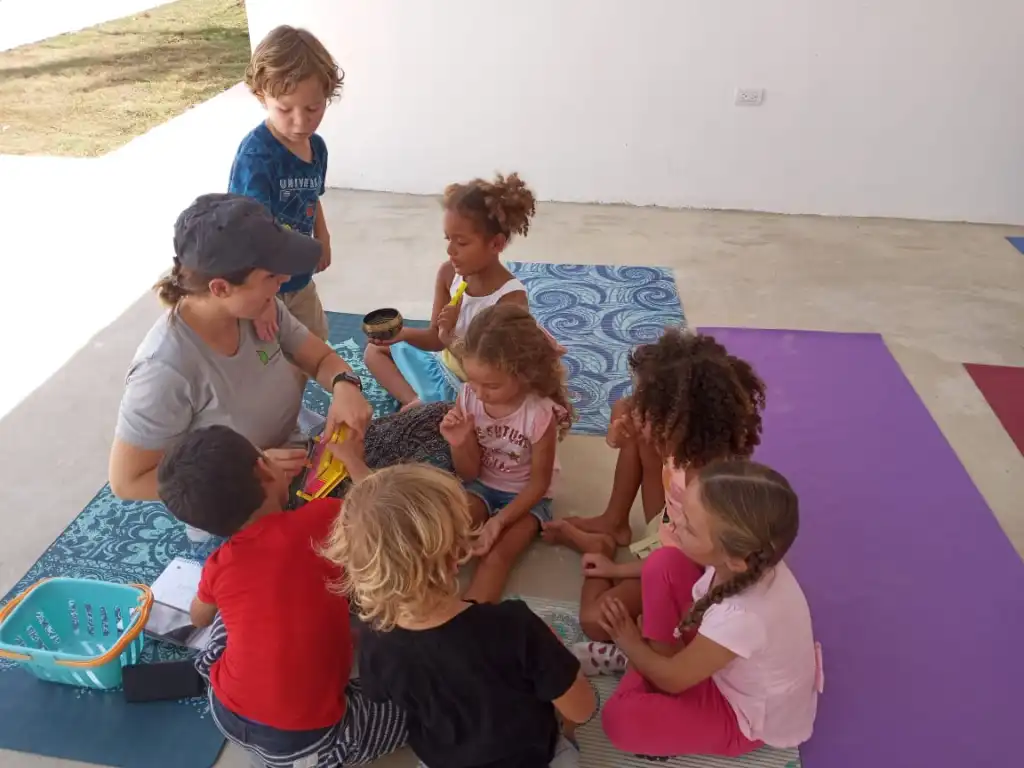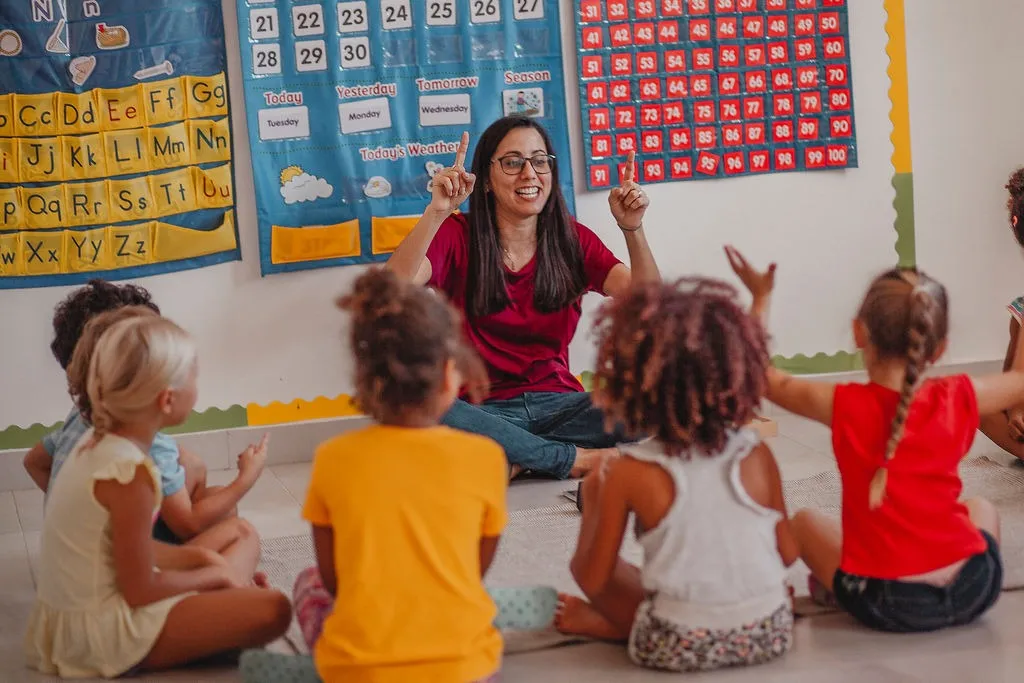The holistic education concept—the philosophy of educating the whole person, beyond core academics—is gaining steam in learning circles as schools struggle to improve student outcomes. Many organizations are realizing that students need more than just a strong foundation in a core curriculum, they also need to be supported by a community and to develop a compassionate understanding of the world around them.
State governments and school district officials set the tone for whether learning environments will focus on academic-centric or holistic learning concepts. However, teachers play the central role in enacting learning policies, and they have the greatest opportunity to help students discover their identities and find meaning in community and world connections through holistic teaching methods. By pursuing a Master of Education in Education Policy and Leadership or a Master of Arts in Teaching, educators can learn how holistic learning and other teaching strategies can shape students’ futures.
What Is Holistic Education?
Holistic education is a comprehensive approach to teaching where educators seek to address the emotional, social, ethical, and academic needs of students in an integrated learning format. Emphasis is placed on positive school environments and providing whole-child supports (services that support academic and nonacademic needs, also known as wraparound supports) to students.
Students are taught to reflect on their actions and how they impact the global and local community, as well as how to learn from the community around them. Teachers often engage students in projects that apply critical-thinking skills toward solving real-world problems.
History of Holistic Education
Holistic education is a relatively new movement developed in the 1980s to counteract the existing US learning structure that was perceived as mechanistic, according to Education Corner. However, the theory of educating based on a person’s entire experience has roots in ancient concepts of instruction, including those of Greek and native indigenous cultures, and has increased in prevalence over the past century. Several different approaches based on whole-person education gained steam in the 20th century, including Maria Montessori’s self-motivated growth philosophy and Rudolf Steiner and Emil Molt’s Waldorf experiential learning technique.
Many states are now incorporating holistic goals into their educational system improvement plans. This trend is encouraged by the Every Student Succeeds Act (ESSA), which provides federal funding to foster state efforts. School systems are increasingly accepting the theory that learning conditions, whole-child services, and social and emotional development are measurable variables of education and can improve equity and outcomes, according to EducationCounsel.
Holistic Education Methods
The goal of holistic education is to cultivate a developing child’s physical, emotional, moral, psychological, and spiritual attributes. Serving the whole child means providing opportunities that are personalized to a child’s skills and feelings. Lessons are conducted in a safe, supportive environment that allows students to utilize their individual strengths. Teachers must be prepared to nurture students with varying educational levels and learning capabilities. While holistic education is guided by one overarching philosophy, teachers may employ a number of methods and strategies to create a holistic learning culture.
Educational Models
Experiential Learning: Schools focused on experiential learning provide hands-on educational experiences. For instance, students might work in groups exploring different learning styles to determine which styles are most effective for them. Holistic, experiential techniques often include problem-solving exercises to address community problems or create innovative products.
Self-Guided Learning: In self-guided educational environments, teachers allow students to learn at their own pace in the style that best suits them. The self-guided culture allows for personalization to mitigate the inadequacies of one-size-fits-all learning models. Low-stakes assessments are used to adjust the curriculum’s content and pace. Classrooms may be smaller and contain students of different ages and ability levels.
Community Schools: Community schools are based on the idea that people find meaning through connections with their community. Teachers partner with community members, including families, residents, organizations, and officials, to provide integrated support and expanded learning opportunities, including after-school and summer programs. Schools are a hub of the community bringing together academic, social, development, and engagement activities.
Interdisciplinary Coursework: Part of what makes up holistic education is the idea that students’ cognitive growth is improved when multiple subjects are addressed together. Some schools are creating integrated programs where teachers from different disciplines come together to teach thematic courses that address issues from multiple perspectives. Coursework might also include independent research, travel, fieldwork, and internships.

Teacher Strategies
Strong Student-Teacher Relationships: When teachers are able to form strong bonds with students, performance and engagement is positively impacted. At-risk students have a higher chance of success when they feel safe and nurtured. Teachers can foster strong relationships by responding to students’ strengths and needs and by acting in a culturally sensitive manner. Allowing students to help develop classroom rules and take on leadership roles helps encourage trust and communication among students and enhances their motivation to succeed.
Encouraging Self-Confidence: Students need to believe that they belong at school and have the ability to succeed. Teachers can help build self-confidence by providing multiple opportunities for students to digest structured information and communicate their understanding in a variety of ways. Teachers must recognize students’ unique strengths and treat all students equally. Student motivation can be enhanced by making sure that lessons are relevant to students’ lives and focus on realistic issues.
Incorporating Emotional Reflection: As a teacher, it’s not always easy to look beyond academic performance to nurture the mental and emotional well-being of a child. To encourage emotional reflection in daily routines, teachers might provide moments for students to reflect, contemplate, or meditate. Lessons to teach empathy could focus on effective listening and observation techniques or literature that presents varying perspectives on social issues.
Benefits of Holistic Education
Holistic education is based on a learning philosophy that brings a number of benefits to students, teachers, schools, and communities. Students are empowered to improve their educational outcomes and gain the life skills necessary to take on a successful professional career.
Improved Academic Achievement: Holistic education can improve the academic achievements of all children, regardless of background and circumstances, by catering to individual learning styles and providing a supportive learning environment. Children’s brain capacities are increased when they feel physically and emotionally safe and connected to others, according to the Learning Policy Institute.
Enhanced Mental and Emotional Well-Being: In a supportive environment, where social and emotional learning is emphasized along with academics, students have a better chance of emerging with self-awareness, confidence, and a sense of social responsibility.
Increased Problem-Solving Ability: Students who are tasked with solving real-world problems that exist in their communities emerge with strong critical-thinking skills. These hands-on projects give students skills that will apply to their adult careers, such as how to gather, analyze, and report data and how to collaborate with others.
Reduced Impact of Inequities: By emphasizing integrated learning concepts, the whole-child approach to education has been shown to reduce the psychological impact of issues such as violence, abuse, or poverty on academic achievement, according to the Learning Policy Institute.



